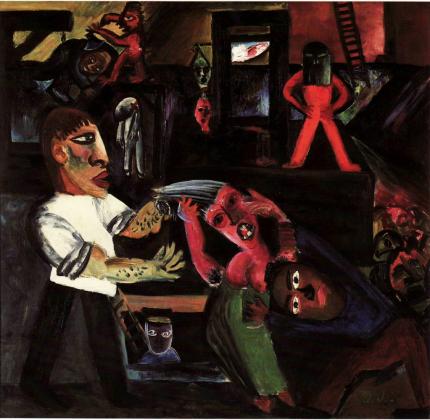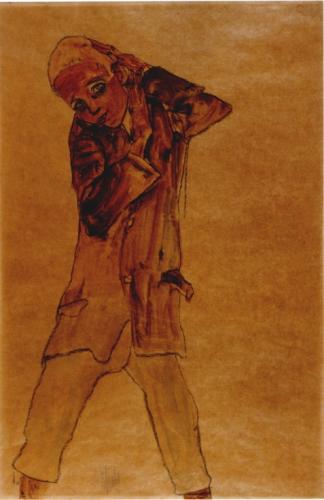-

Das jüngste Gericht ( The Last Judgement), as depicted by
Dresden Secession artist Walter Jacob is a powerful contemporary
updating of a traditional image, complete with a bold portrait of Dix on the left,
yanking a woman by the hair as she resists being pulled in to an abyss .
MMaxi
-

Dix's Die Skatspieler ( The Skat Players ) of 1920 shows three mutilated veterans, former officers,
playing cards in a gaslit pub. So deformed are they by their injuries that they are forced to play
with prophetic hands or with their mouths or feet. Little is left of these maimed figures,
yet even the fragments - the iron Cross, the carefully parted hair - recall an earlier world.
Collage elements, such as the newspapers on the walls, heighten the sense of realism.
MMaxi
-
-
-
-
-

Lord Jonh Stuart, and his Brother Lord Bernard Stuart c. 1638
-

George, Lord Digby and William, Lord Russel c. 1637, or earlier
Aristocratic portraiture operated broadly within the same parameters as Royal portraiture. Just as the monarch had reason to announce his humanity as well as his authority, aristocracy had a role and claimed a sensibility. ( From the evidence of the portraits, it sometimes seems as if some aristocrats were not able to look in both directions at the same time.) There might be a quasi-feudal duty to do again.
And martial readiness remained a virtue. However, in the mean time, to be warlike and pious was not enough. Again renaissance humanism had produced the solution to the problem of redundancy for aristocrats in the post-feudal age. It had rediscovered and re-present an ideal of nobility that could persist outside of the perilous conditions of feudalism.
While some people lived under the yoke of necessity and others had economic and social power sufficient to enable them to exploit their situation, the noblest human being was the one who was above both need and greed. The aristocrat, so long as he was sufficiently inured, could have the privilege of conducting himself disinterestedly. A life of aesthetic self-improvement could be the way.
MMaxi
-

Sir Anthony (Anton) van Dyck (22 March 1599 – 9 December 1641) was a Flemish artist who became the leading court painter in England. He is most famous for his portraits of royalty, painted with a preternatural virtuosity which set the standard for elegance in the genre. He excelled also in the painting of biblical and mythological subjects, displayed outstanding facility as a draftsman, and was a master of etching.
From the Beginning Van Dyck painted mythological and religious subjects.
While few portrait drawings in chalk on grey paper survive - perhaps they were usually destroyed in the process of transferring their information to the canvas - large numbers of drawings connected with history - painting projects do.
As Van Dyck's thinking evolved, there remained a constant; the formal idea that he surely owed to Rubens in the first instance. It was the diagonal, a recurrent device in Ruben's work, lending disequilibrium to composition and drama to narrative. Anyone could see its force in the Cathedral in Antwerp, in the Raising of the Cross and the Deposition.
MMaxi
-

The Deposition, 1611 central piece in triptych
Painting that would emulate Titian attempts to catch to catch the sensational aspects of things. What painting, as an art, shares with objects of sensation is visibility ; and vision is in the first instance the experience of being bombarded by stimuli of colour . Rubens attempted to evoke all the senses in his work. It is enough to refer to the grimy, bruised and bloody foot of Christ touching the pale skin of the Magdalen's shoulder in his 1611 Deposition. But the important thing for him is the engagement of the senses. The role of the eye in the context of painting is self-evident.
MMaxi on the move








